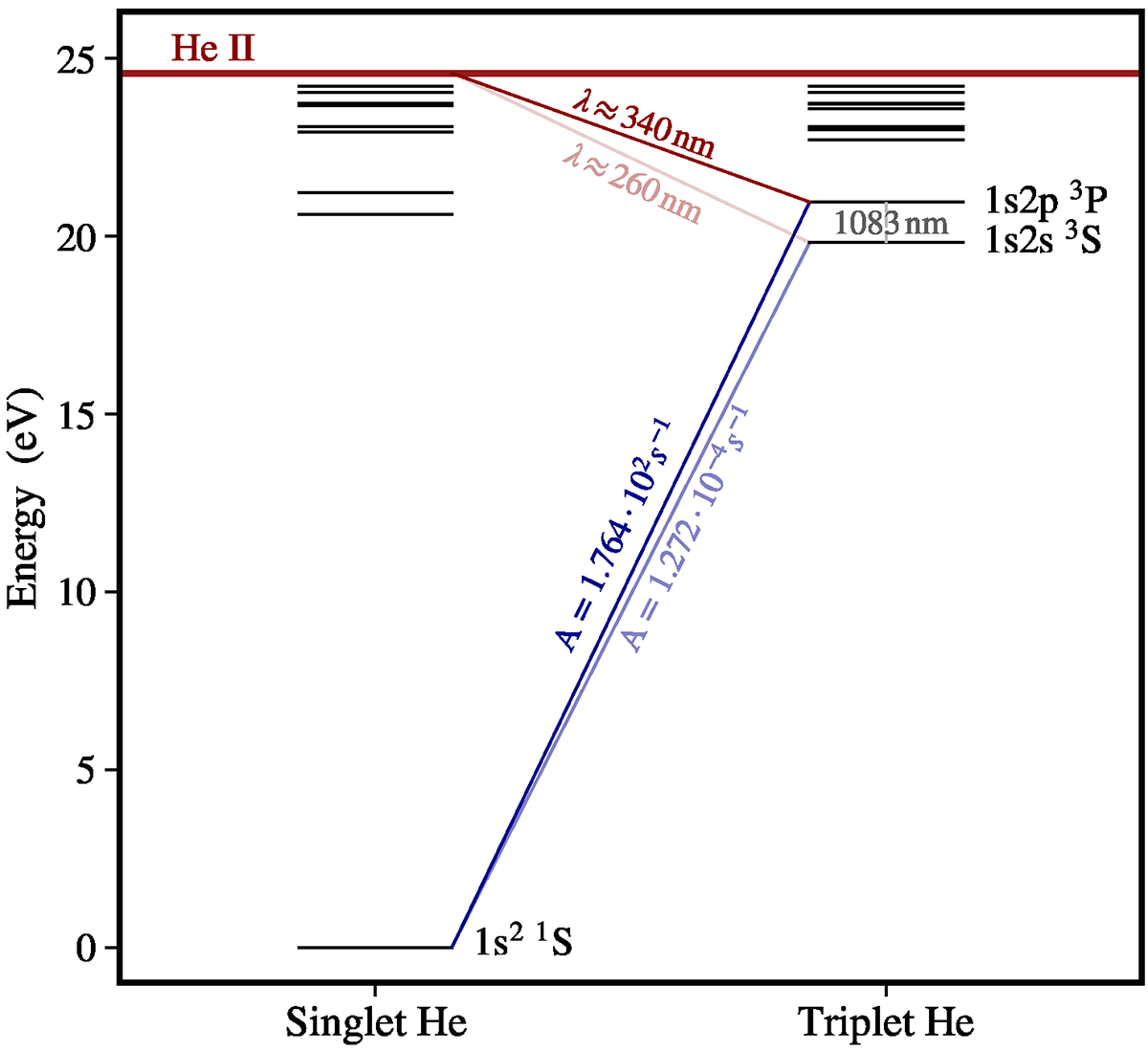Fig. 2.

Download original image
Grotrian diagram showing the He I energy levels. The 1s2s 3S–1s2p 3P 1083 nm transition could produce a 1 μm P Cygni feature in NLTE models (e.g. Tarumi et al. 2023) because 1s2s 3S can be difficult to ionise (e.g. requiring UV photons < 260 nm) and the natural transition to the ground state is very slow (e.g. characteristic timescale of hours). However, as shown here, the other well-populated triplet state, 1s2p 3P, is several orders of magnitude more susceptible to ionisation and naturally decays to the ground state 106 times faster, on a timescale of 0.01 second.
Current usage metrics show cumulative count of Article Views (full-text article views including HTML views, PDF and ePub downloads, according to the available data) and Abstracts Views on Vision4Press platform.
Data correspond to usage on the plateform after 2015. The current usage metrics is available 48-96 hours after online publication and is updated daily on week days.
Initial download of the metrics may take a while.


